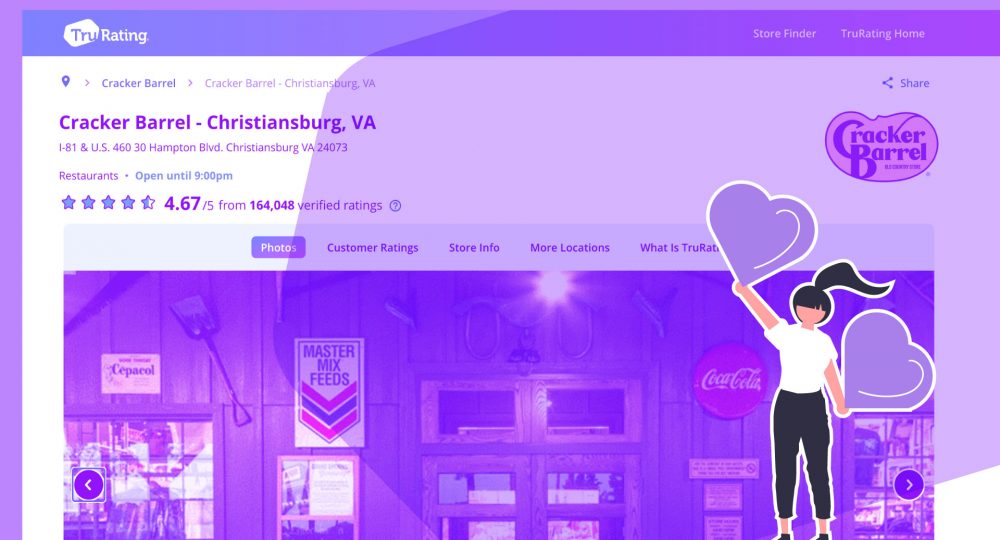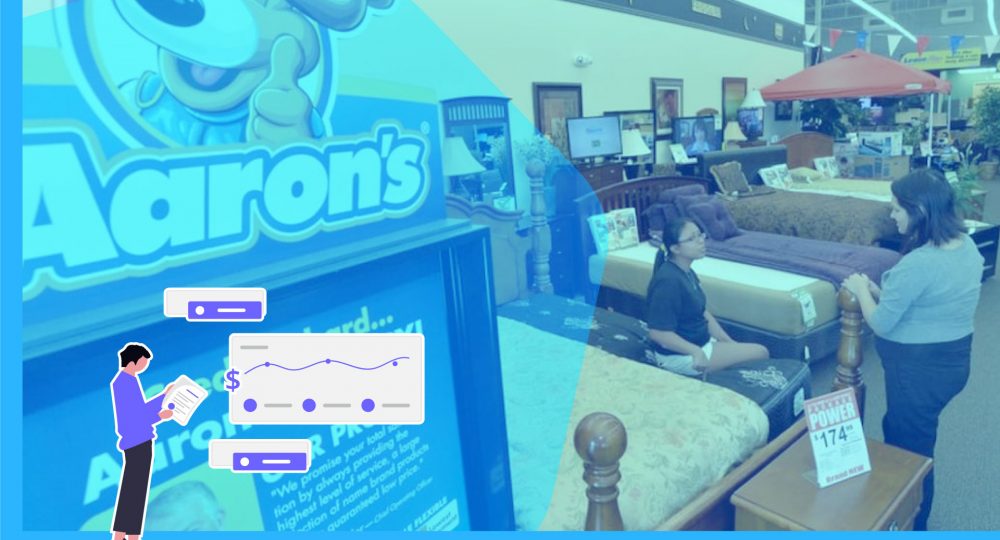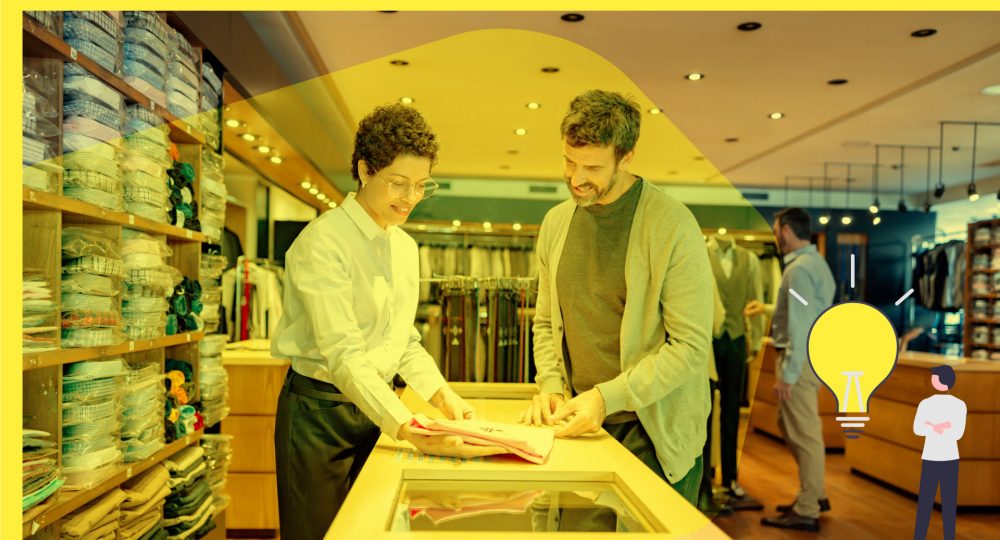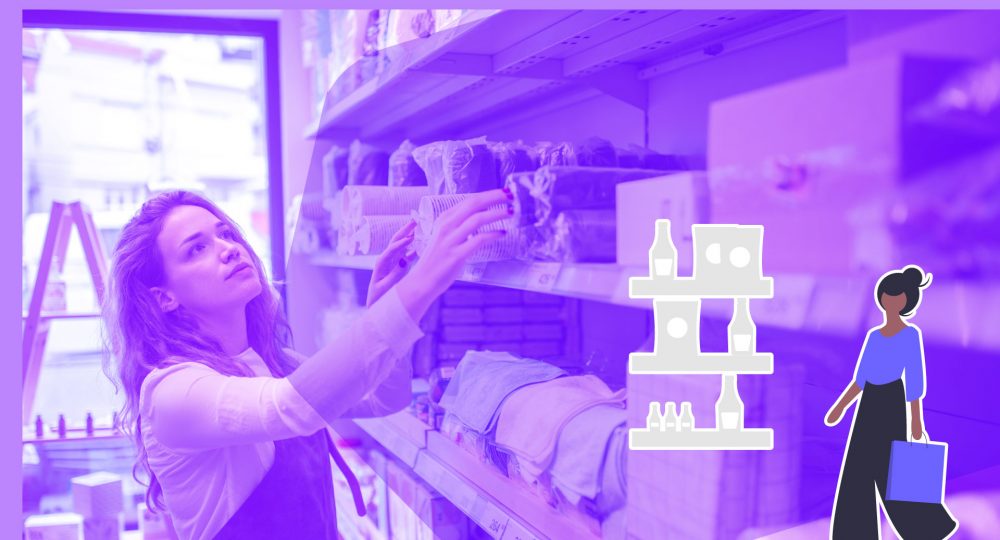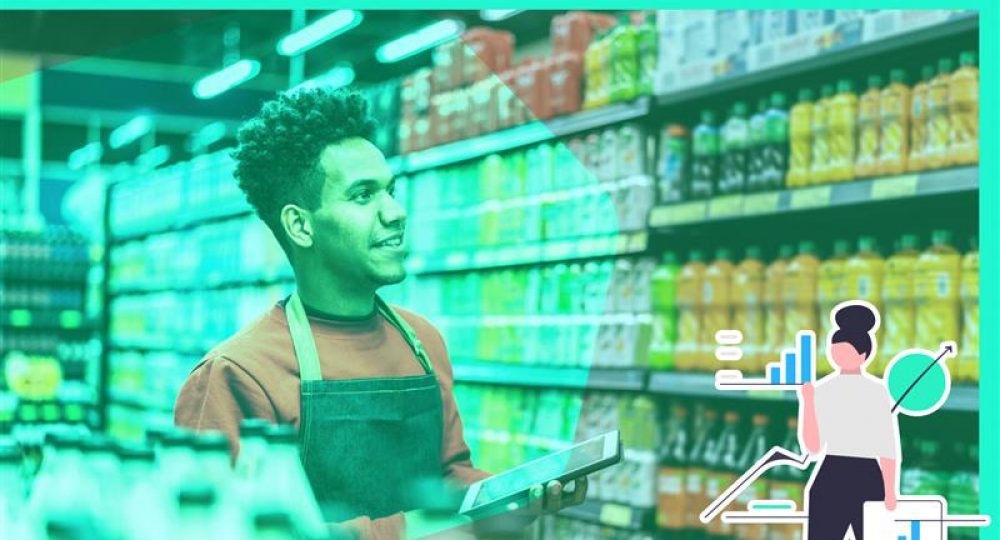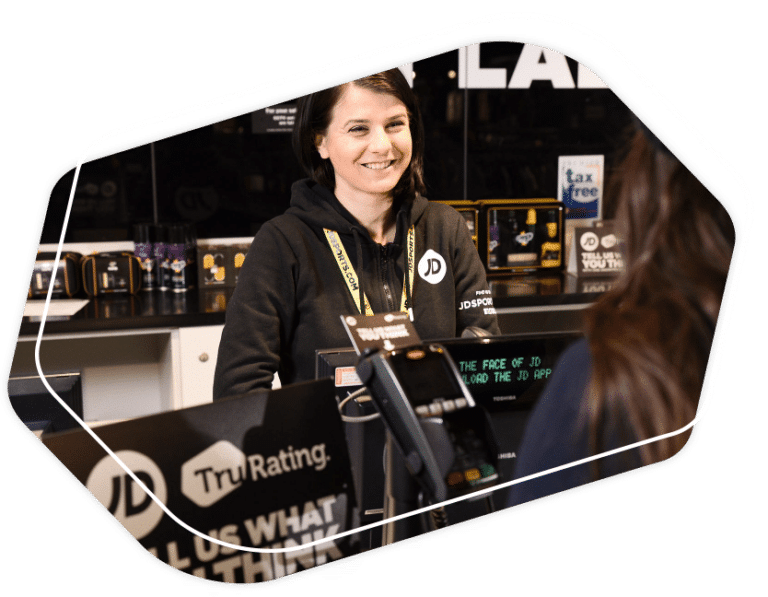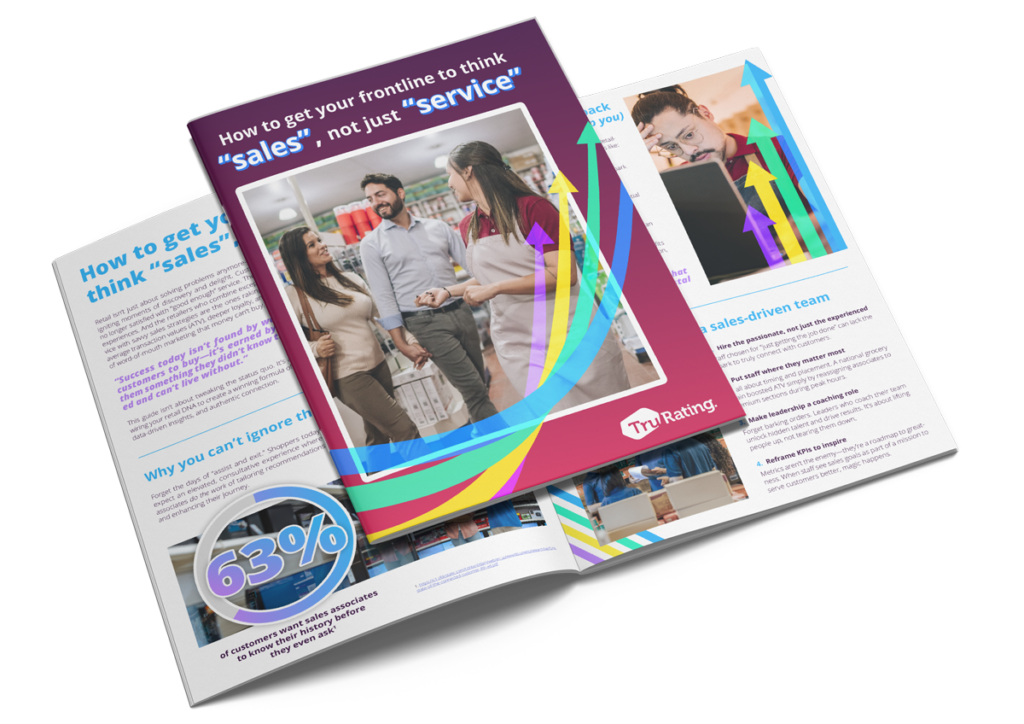Following a year that retail isn’t likely to forget – one of the key takeaways was the importance of being digitally prepared. Though much of the attention was focused on the growth in eCommerce, the pandemic showed that the concept of isolated channels is starting to fall apart. While for many Covid played the role of an enforced acceleration, the question that retailers might be asking, is what does a successful ‘omnichannel’ strategy look like in 2021?
Taken at a definitional level – omnichannel quite literally means ‘all channels as one’. However, in retail terms, perhaps a better way to think about it is to integrate all channels to offer a united customer experience.
‘Seamless’, ‘Frictionless’ and ‘Connected’ are some of the adjectives that tend to crop up concerning the theme of omnichannel retail – all of which sound good – but also have something of the buzzword about them, rather than a clear direction to live and breathe by.
Rather than try and settle the matter once and for all, we decided to do what we do best, ask real customers for their views. The data presented in this report is based on responses collected from over 95,000 consumers between April and May of 2021 in North America, the UK, Australia and New Zealand.
Where regional views are displayed this data is online only as due to store closures we were unable to cover each of the territories from this lens.
Webrooming vs. showrooming

The concepts of ‘Webrooming’ and ‘Showrooming’ are increasingly commonplace in retail as the lines between digital and physical continue to blur. Our data shows a slight lead for customers looking at products in-store before purchasing online. Still, roughly a 1/3 of customers are doing their homework first, regardless of channel.
The Regions
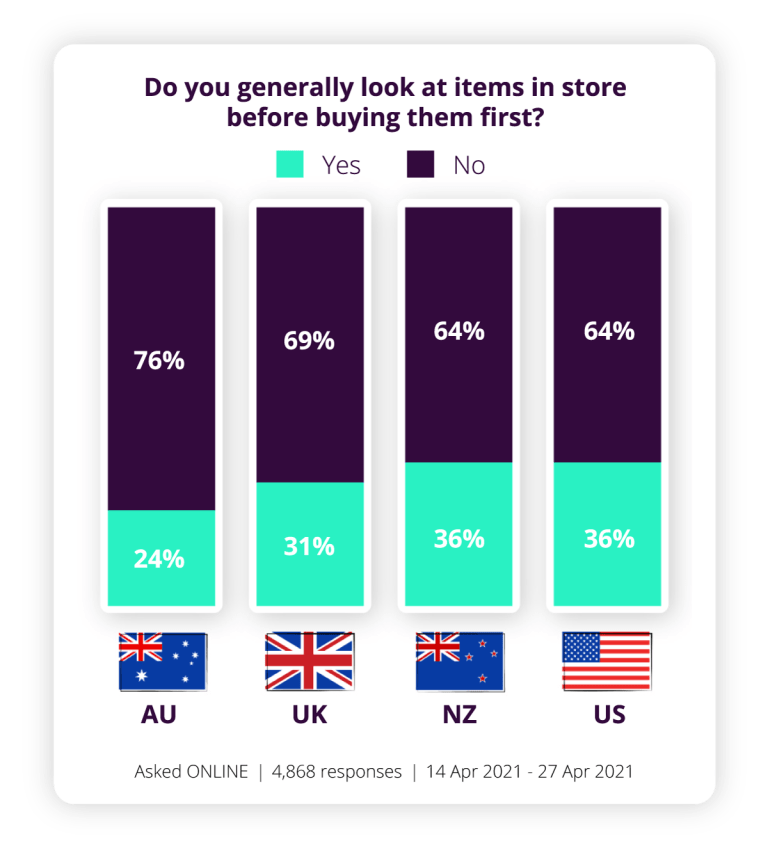
When broken down across the regions, we see the US leads in researching purchases online first – does this reflect a more mature eCommerce market? Is Australia still catching up in terms of eComm sophistication – size and comparative sparsity of population, along with a later entry to market might suggest so.
Deal Hunting
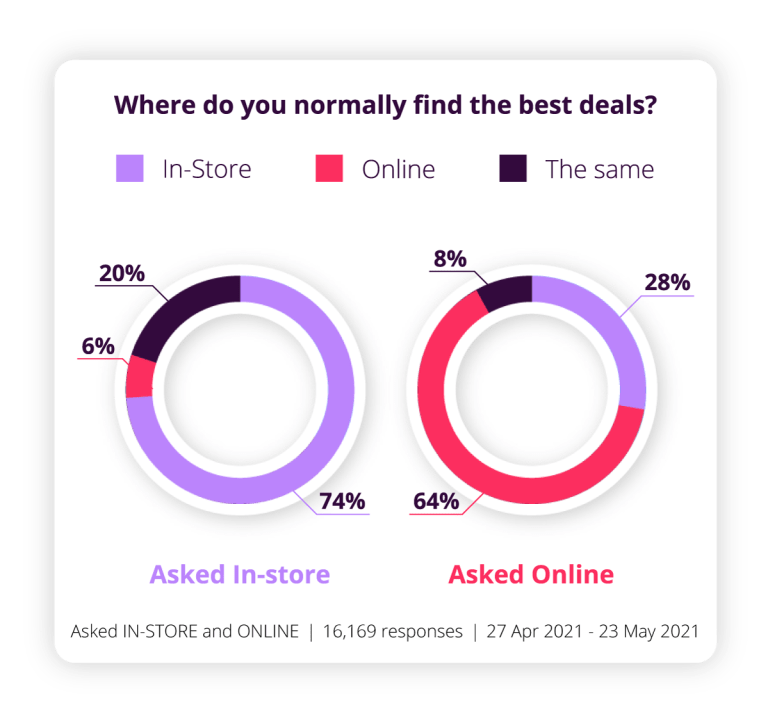
By and large, customers believe the best deals can be found where they’re already shopping. Perhaps not shocking. Yet does this split suggest retail polarization in action? In-store shoppers are most fanatical about where they like to shop. The question begs – from a retailer perspective, does it matter? If you can cater to both needs, perhaps that’s enough.
TheRegions
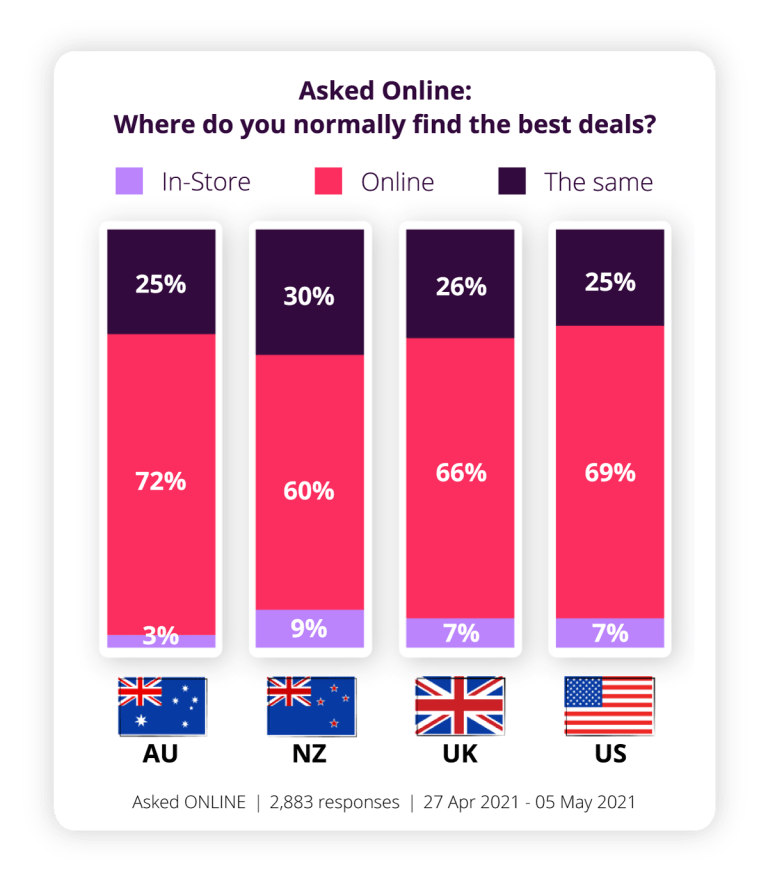
While online shoppers track in a similar way for the US + UK, we see a split between the AU + NZ with Kiwi’s slightly more willing to bet a better deal awaits in store.
The Shopping Experience
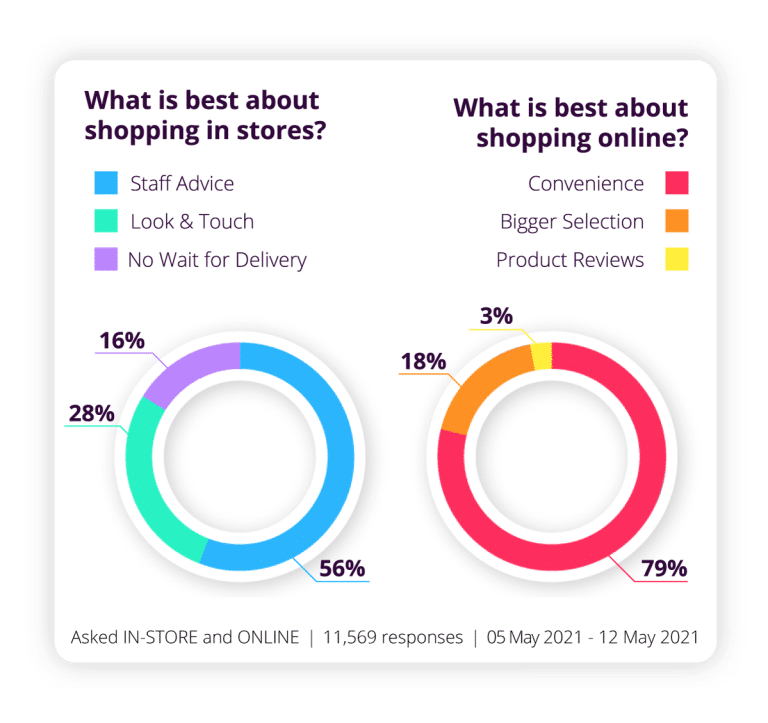
Overwhelmingly, when it comes to shopping in-store, it seems to be all about the people. For retailers questioning the importance of investing in staff – the results speak for themselves. The tangible feel of products is also important, with a final bonus of instant gratification.
Onlinewe see a different story. While Convenience as King is perhaps a no-brainer, it’s interesting to see how low Product Reviews score. Does this tell us something about the one aspect of retail that online has yet to find an equitable counterpart – the human touch?
The Regions
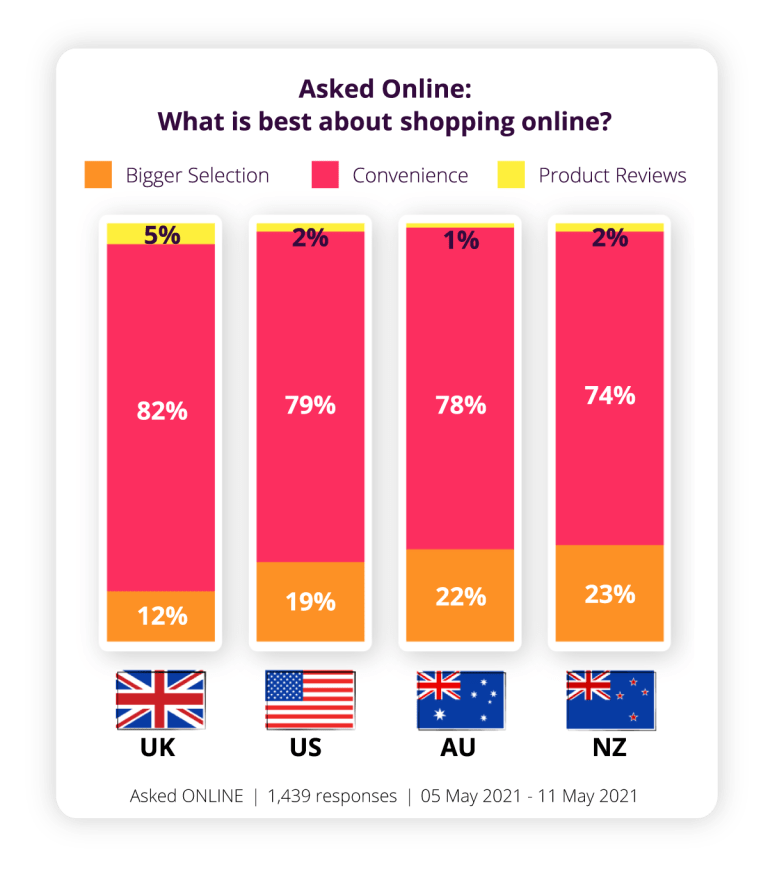
When it comes to the regions – we finally see an Australia/New Zealand alignment, with both nations preferring online’s Bigger Selection while the UK leads on convenience, perhaps due to shorter shipping times.
The Path to Purchase
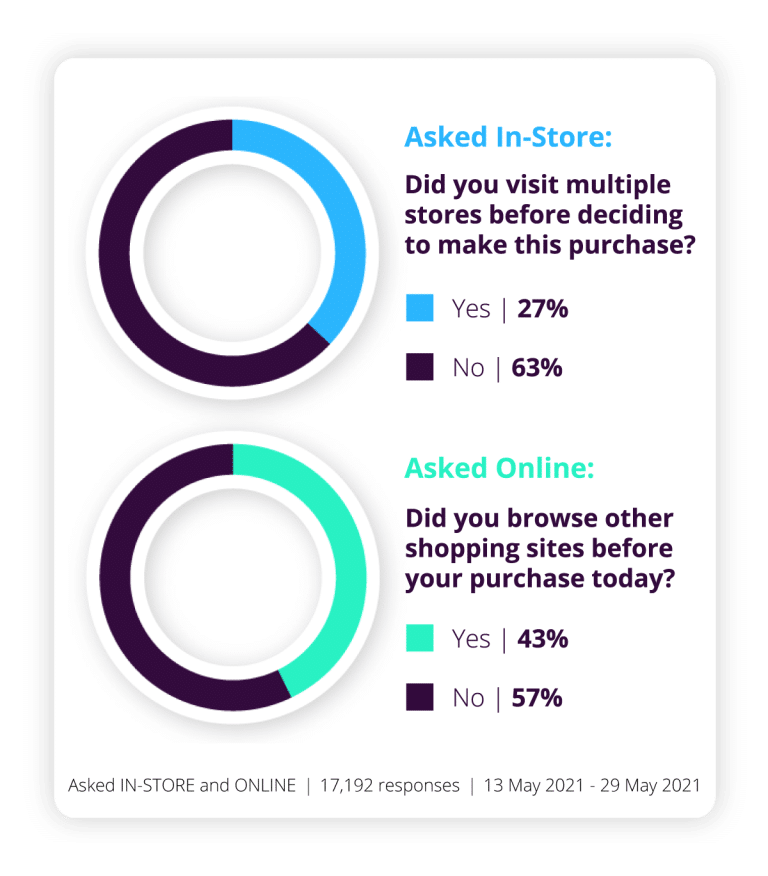
In the age of infinite choice, it might seem surprising that most in-store and online shoppers are less likelyto play the retail field before making a purchase. While online browsing is certainly easier, the types of purchase undoubtedly play a role, with big-ticket items more likely to draw a wider search before a decision is made.
The Regions
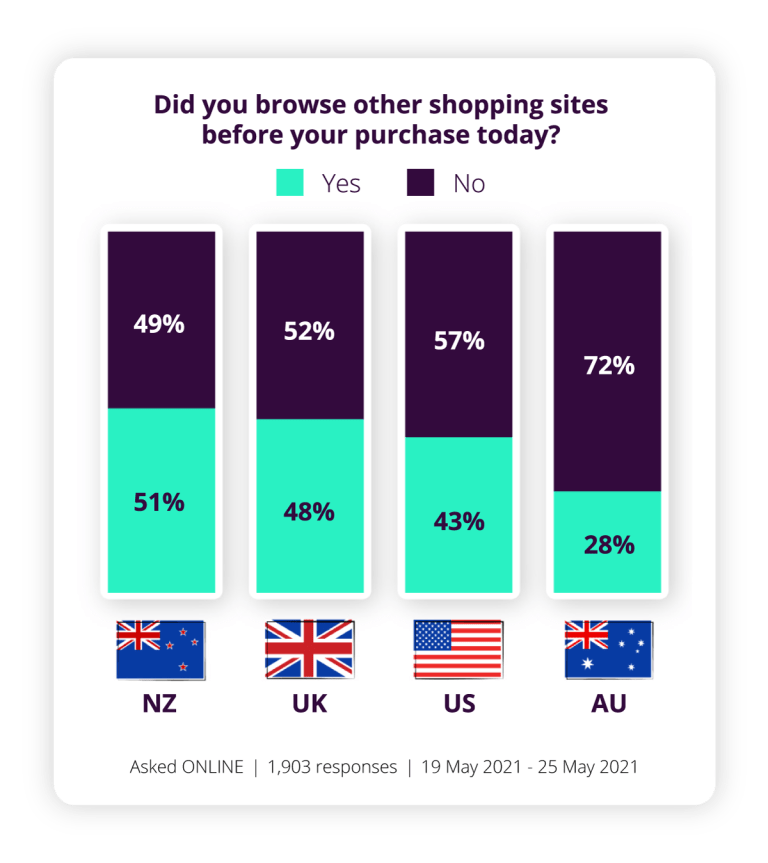
AU + NZ once again seem to move in their own ways, as Australians are least likely to view multiple sites vs NZ’s browsers. The UK & US appear to keep the ‘special relationship’ alive – at least for now.
The Tru View
If there’s one thing the pandemic has highlighted over the past 12 months – it’s that omnichannel retail is no longer just something to be talked about aspirationally. It’s the reality that we all expect on a day to day basis. While customers might not ‘think in channels’, they expect a consistent customer experience, delivered to their needs, wherever they happen to be shopping. For retailers, this means that the way you organise, measure and incentivise the various parts of your business needs to be aligned to an omnichannel retail mindset.
While customer spend certainly saw an accelerated growth online last year, it’s clear that customers continue to value different parts of the customer experience, depending on the channel, needs and a myriad of other factors. It’s interesting to see that up to a third of customers now actively engage in Webrooming or Showrooming when shopping – the blurring of the lines between physical and online continues, as we become increasingly comfortable using stores and web something like a harmonious combination.
As commentators below have pointed out – thinking of the store and online as separate and distinct channels, a surprisingly common practice looks to be an outdated way of thinking that retailers quickly need to move on from. As physical locations become more involved as a part of online distribution and in-store shoppers become comfortable visiting stores to browse before ordering online, we’re only going to see omnichannel become more embedded in everyday practice. Being sure you’re ahead of the game and delivering to your customers’ expectations will become a key competitive difference in the years ahead.
Ask the Experts – 14 Retail Influencers Speak
The data leaves no doubt the importance of frontline retail workers in the shopping experience and shows how convenience is a top priority for online shoppers. These two factors combined illustrate why becoming a true omnichannel retailer is critical in 2021 and not just aspirational. That combination is why omnichannel retailers see greater success than retailers who lack a strong in-store experience (led by their frontline staff) and convenience capabilities to drive digital shopping, including fast shipping, local delivery, and BOPIS/curbside pickup. While it was once all about choice, the data shows the choice that matters most is in fulfilment options and discovery in-store – a true Omni-experience!
Ricardo Belmar, Retail Transformation Thought Leader & Founder, Retail Razor Advisory
The Great Acceleration provoked by the pandemic has clearly shown us that retailers need to race even more rapidly to serve consumers with strategies that equally support digital and physical approaches. An organization that feels equally confident meeting its customers’ needs in these converging and complementary realms will have far greater resilience to face future challenges. Heading to this 50/50 physical/digital world is mission-critical both culturally and operationally.
Carl Boutet, Chief Strategist & Executive Advisor, Studio RX
I’m a conscientious objector to the term “omnichannel,” I think it’s the wrong approach. I believe the whole idea of channels, in general, is obsolete. There are no more channels, there are only consumers, and they are the only channel that counts. We measure success by where the consumer transacts, and what needs to happen now is for the various modes of purchasing to act uniformly without regard to where the purchase is made. For example, a consumer who lives near a store and walks past it every day may be aware of the brand because of the store but shop only on their mobile device. That consumer’s sale is recorded as an e-tail, but in reality, it’s a function of both. We will see more of that as time goes on, and we need new metrics to measure the impact of different sales venues on actual revenue and profits.
Richard Kestenbaum, Partner at Triangle Capital LLC, Forbes Contributor
The line between online and brick-and-mortar retail is becoming blurred. The modern consumer moves from one to the other and wants to do so seamlessly. They visit multiple websites, shop in-store, look at ratings and reviews, and listen to suggestions from their friends, family and work colleagues. The retailer that can provide a true omnichannel shopping experience that makes it easy, convenient and frictionless for their customers will have a competitive advantage.
Shep Hyken, Customer Service and Experience Expert and bestselling author of I’ll Be Back
How important is omnichannel to the modern retail experience? Omnichannel is the retail experience now. Involving the store in eCommerce orders allows retailers to save on shipping, gets the product to the customer more quickly, and enhances customer satisfaction. Target issued a press release saying that in 4Q 2020, fully 95% of orders were fulfilled through the store. Retailers who can’t build out this capability will be at a distinct disadvantage.
Cathy Hotka, Principal, Cathy Hotka & Associates
It’s simple, shoppers go online to buy to replace or get a specific item, but they go to stores to discover. The importance is in having a dynamic experience to help them discover more than they initially searched online for.
Bob Phibbs, CEO, the Retail Doctor
For years the retail industry has referred to omnichannel without really understanding what the term means. I personally eschewed using it, as to me, it had no purpose or relevance (after all, who does some omnichannel?). But one thing that Covid has done is finally bring true meaning to the term. Because now, everything that a retailer does needs to be omnichannel. Serving the customer where, how and when they wish and not the other way around. Providing a consistent engagement across all touchpoints (customers don’t think in channels) adds value to every engagement by being relevant and contextual. And in that sense, now I rather like omnichannel.
Andrew Busby, Founder & CEO Retail Reflections, Co-Founder SafePrem Solutions
I am literally the last person on the planet to offer any thoughts of “Omnichannel”. The reason is it’s a silly term that hides all the real work to bring all the channels (and they are most certainly channels) together for a truly unified commerce experience.
Jeff Roster, Advisor GMU Centre for Retail Transformation, Co-Host This Week in Innovation
Being an omnichannel merchant is more important than ever, especially post the Covid pandemic. Consumers were challenged with new ways to connect with their favorite brands and retailers during Covid and, along the way, discovered new ones, as well. Their path to purchase was varied from their traditional preferences for many of them, but ultimately they learned new ways to make purchases and even enjoyed many of these experiences. Additionally, the spending patterns among generations shift, and this is something to always keep in mind as a savvy merchant. Having a dynamic, omnichannel experience in place is among the best ways to make sure your business doesn’t lose out on dollars from across the generations. After all, one consumer’s path to purchase versus another can be wildly different, even if they ultimately buy the same thing. Keeping this in mind, it should no longer be a question of if you are an omnichannel merchant but rather, why aren’t you?
Nicole Leinbach Reyhle, Founder, Retail Minded
Our job as companies is to prove, in all we do, that we honor and respect our customers and partners. Omnichannel is a key component in building your “respect delivery” machine – in that it tells customers that we deliver on your terms.
Jeanne Bliss, Founder & CEO, Customer Bliss
We know early Covid drove more people to shop online, but it has also stressed the need for physical stores to step up and be more than just a customer-facing stock room. As your customer’s perception of the role of stores changes, you now need to determine what it really means for all of your physical and digital channels to play coherently and collectively together – and how to drive that change.
Oliver Banks, Director & Consultant, OB&Co Ltd., host of the Retail Transformation
Before Covid, consumers had already shown their willingness to shop anywhere; the pandemic proved just how much. Today, having a strong omnichannel experience is paramount to retail success. Consumers are comfortable shopping for some things online, while others prefer to pick up in-store. They want a satisfying and easy experience in both places.
Kizer & Bender, Consumer Anthropologists and Retail Consultants
With several DTC brands expanding their physical footprint and traditional brick-and-mortar retailers focusing on building a stronger online presence, I think it is safe to say that having multiple customer touchpoints is now integral to many retailer’s strategies. I believe the conversation needs to pivot to understanding how best to use these channels in an integrated and seamless manner to enhance the customer shopping experience, which depends on a number of retailer and customer contextual factors.
Gautham Vadakkepatt, Director Centre for Retail Transformation, George Mason University
The pandemic has no doubt accelerated consumer buying behaviors, such as online grocery shopping. And although e-commerce surged amid the crisis, brick-and-mortar retail remains the lion’s share of consumer purchases in the U.S. At the same time, new purchasing models emerged that could be poised for long-term growth: These include delivery-only dining concepts from restaurants like Applebee’s and P.F. Chang’s as at-home eating trends persist, just as startups like NTWRK to the likes of Instagram and Amazon are powering livestreamed commerce, bringing real-time shopping events to consumers in a digital space.
Barbara Thau, Senior Featured Editor, CO— by U.S. Chamber of Commerce


